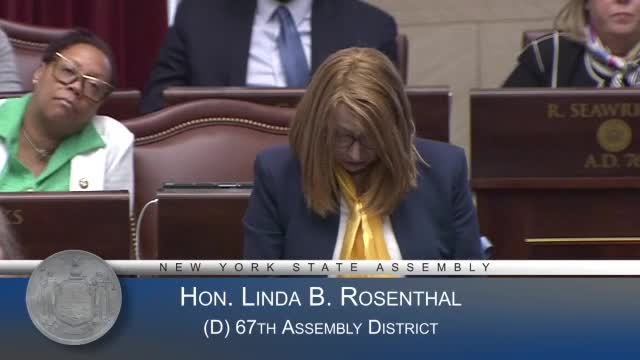New York legislators debate right to die with dignity bill
April 29, 2025 | 2025 Legislature NY, New York
This article was created by AI summarizing key points discussed. AI makes mistakes, so for full details and context, please refer to the video of the full meeting. Please report any errors so we can fix them. Report an error »

In a pivotal session on April 29, 2025, the New York Legislature engaged in a heartfelt debate surrounding a bill aimed at allowing terminally ill patients the option to end their lives with dignity. The discussions highlighted the emotional weight of the topic, with legislators sharing personal stories of loss and suffering, emphasizing the need for compassionate choices in end-of-life care.
One lawmaker expressed deep gratitude to the bill's sponsor and advocates, acknowledging the years of effort that led to this moment. They articulated the profound emotional turmoil faced by those diagnosed with terminal illnesses, advocating for the right to choose a dignified death rather than endure prolonged suffering. This sentiment resonated with many in the chamber, who recognized the importance of providing options to those in pain.
Another legislator, Mr. Gibbs, echoed this sentiment, stating that all New Yorkers deserve dignity in their final moments. He referenced the tragic story of Robert Brooks, underscoring the urgency of passing the bill to prevent others from experiencing similar indignities at the end of life.
Conversely, some lawmakers expressed differing views, reflecting on the societal struggle with death and the belief that suffering is an inherent part of life. One member shared personal experiences of loss, emphasizing a faith-based perspective that views life as a divine gift not to be rejected. This perspective highlighted the complexities of the issue, as legislators grappled with the moral implications of assisted dying.
The session concluded with a strong push towards the bill's passage, as many legislators voiced their support for providing terminally ill patients with the autonomy to make their own end-of-life decisions. The outcome of this debate could significantly impact the lives of countless New Yorkers facing terminal illnesses, marking a potential shift in how the state approaches end-of-life care. As the legislature moves forward, the discussions from this session will likely resonate within the community, reflecting broader conversations about dignity, suffering, and the choices available to those at the end of life.
One lawmaker expressed deep gratitude to the bill's sponsor and advocates, acknowledging the years of effort that led to this moment. They articulated the profound emotional turmoil faced by those diagnosed with terminal illnesses, advocating for the right to choose a dignified death rather than endure prolonged suffering. This sentiment resonated with many in the chamber, who recognized the importance of providing options to those in pain.
Another legislator, Mr. Gibbs, echoed this sentiment, stating that all New Yorkers deserve dignity in their final moments. He referenced the tragic story of Robert Brooks, underscoring the urgency of passing the bill to prevent others from experiencing similar indignities at the end of life.
Conversely, some lawmakers expressed differing views, reflecting on the societal struggle with death and the belief that suffering is an inherent part of life. One member shared personal experiences of loss, emphasizing a faith-based perspective that views life as a divine gift not to be rejected. This perspective highlighted the complexities of the issue, as legislators grappled with the moral implications of assisted dying.
The session concluded with a strong push towards the bill's passage, as many legislators voiced their support for providing terminally ill patients with the autonomy to make their own end-of-life decisions. The outcome of this debate could significantly impact the lives of countless New Yorkers facing terminal illnesses, marking a potential shift in how the state approaches end-of-life care. As the legislature moves forward, the discussions from this session will likely resonate within the community, reflecting broader conversations about dignity, suffering, and the choices available to those at the end of life.
View full meeting
This article is based on a recent meeting—watch the full video and explore the complete transcript for deeper insights into the discussion.
View full meeting
